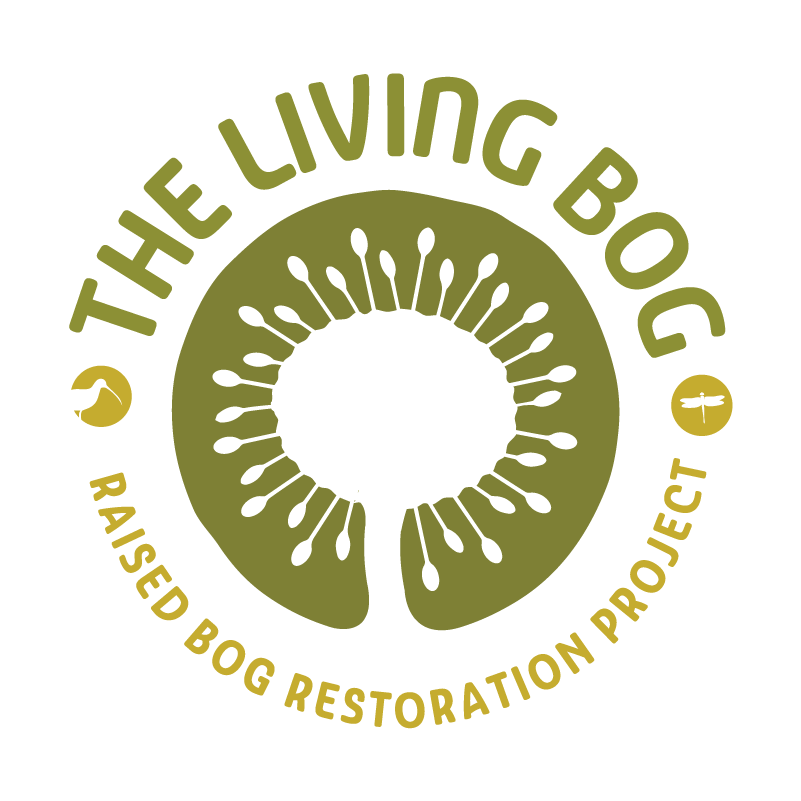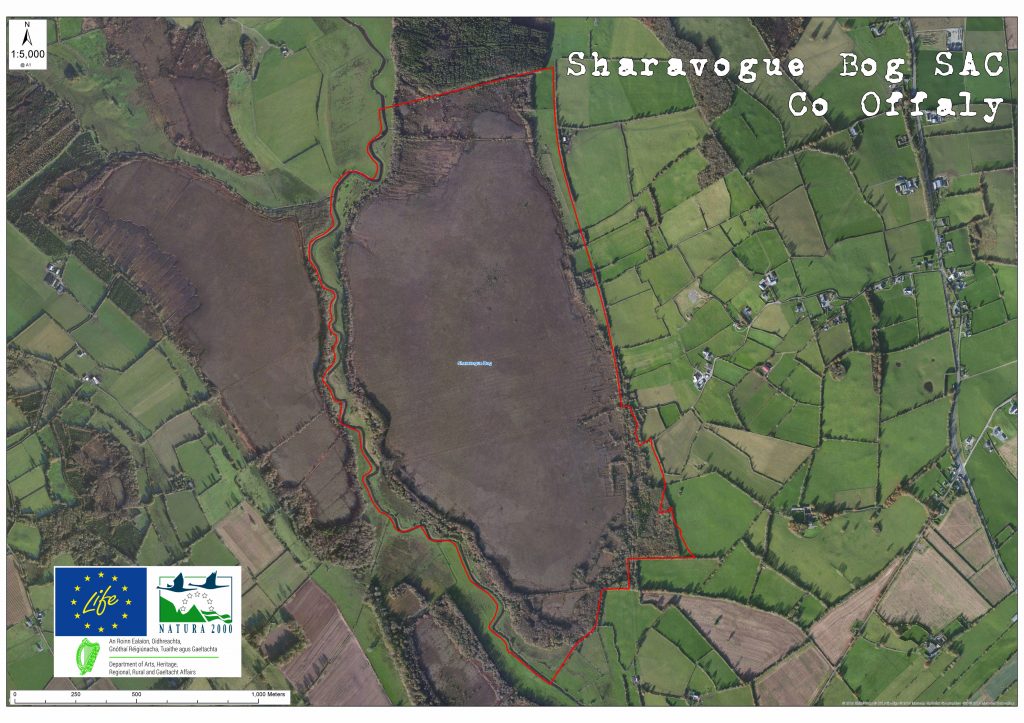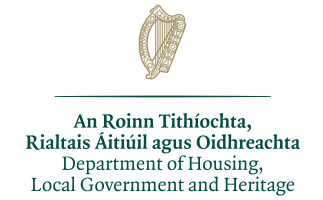The €5.4 million ‘The Living Bog’ project was officially launched on Friday, September 15, 2017 at Europe’s largest raised bog – Clara Bog in Offaly – by the Minister for Culture, Heritage and the Gaeltacht, Heather Humphreys T.D.
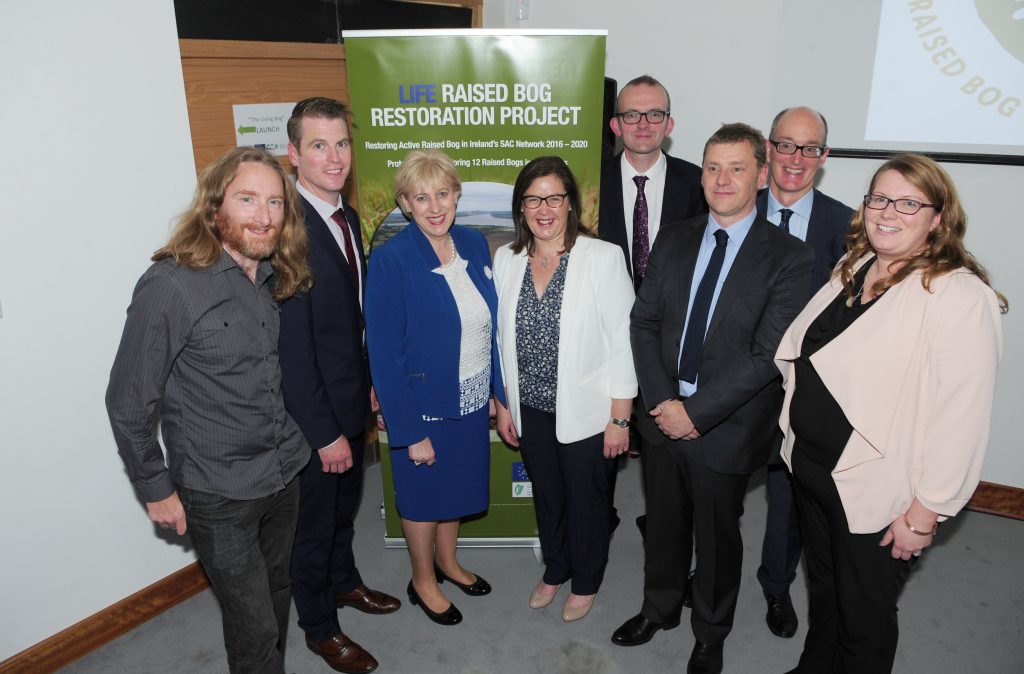
Minister for Culture, Heritage and the Gaeltacht Heather Humphreys TD pictured (third from left) with Living Bog team members (from left) William Crowley, Jack McGauley, Evelyn Slevin, Ronan Casey and John Cody. Also in the picture are Brian Lucas and Suzanne Nally from the Peatlands Unit with the Dept of Culture, Heritage and the Gaeltacht. Pic: James Flynn APX.
A large attendance was present at the award-winning Clara Bog Visitor Centre, close to the bog, for the official launch. Many community groups and individuals who have a connection to each of the 12 project sites were present at the launch, as were many political, governmental, environmental, NGO, and media individuals, as well as EU LIFE officials and a host of peatland dignitaries, activists and local landowners and farmers. The project is funded by the European Union’s LIFE Programme for Nature and Biodiversity projects and the Irish government’s Department of Culture, Heritage and the Gaeltacht.
Minister Humphreys said from an international perspective, the raised bogs of Ireland are among the most important near-natural eco-systems, and she thanked the LIFE Programme for its support in ensuring they will be enjoyed by generations to come. She said the 12 project sites could form a key part of a ‘Peat District’ in Ireland, which would attract visitors from all over the world. She equated the total area of raised bog habitat that Living Bog restoration work will improve to be akin to 7,000 major sports stadia.
The project sites (and nearest towns) are:
- Ardagullion Bog SAC, Edgeworthstown/Granard, Co Longford
- Garriskil Bog SAC, Mullingar, Co Westmeath
- Raheenmore Bog SAC, Daingean, Co Offaly
- Mongan Bog SAC, Clonmacnoise, Co Offaly
- Clara Bog SAC, Clara, Co Offaly
- Ferbane Bog SAC, Ferbane Co Offaly
- Moyclare Bog SAC, Ferbane, Co Offaly
- Sharavogue Bog SAC, Birr, Co Offaly
- Derrinea Bog SAC, Co Roscommon
- Carrowbehy Bog SAC, Co Roscommon
- Carrownagappul Bog SAC, Mountbellew, Co Galway
- Killyconny Bog, Mullagh, Co Cavan/Meath.
1% OF THE BOGS LEFT
The Minister hopes the 12 bog project will be the start of a major re-appreciation of Ireland’s last remaining raised bogs. Just 1% of the 850,000 acres of active, living raised bog mapped in the early 1810’s by Richard Lovell Edgeworth and others remains, and this alone accounts for almost 50% of the active, living raised bog in Western Europe.
“This is biggest single raised bog restoration project in the history of the state. It will see an area of raised bog the equivalent of 7,000 Croke Parks brought back to life. The project, in consultation with landowners and local communities, will use active restoration measures to establish suitable conditions for peat to once again form on the bogs. I hope this project will go towards the creation of a ‘Peat District’ for Ireland – an area of raised bogs which will give visitors a chance to discover 10,000 years of history.
“As an education and tourism resource, the natural eco-system that is a raised bog is without equal in Ireland. ‘The Living Bog’ team will encourage youngsters from National School level right up to University to visit project sites to learn more about this unique landscape. The project will also support community-led amenities at the bogs, with new walking trails and boardwalks being developed as the bogs become educational and environmental amenities.”
At launch, Minister Humphreys announced that amenity provision is to be developed for five sites and she was delighted to note the Living Bog team have been working with local community groups, and engaging with other government and local authorities to develop plans for amenities with the local groups.
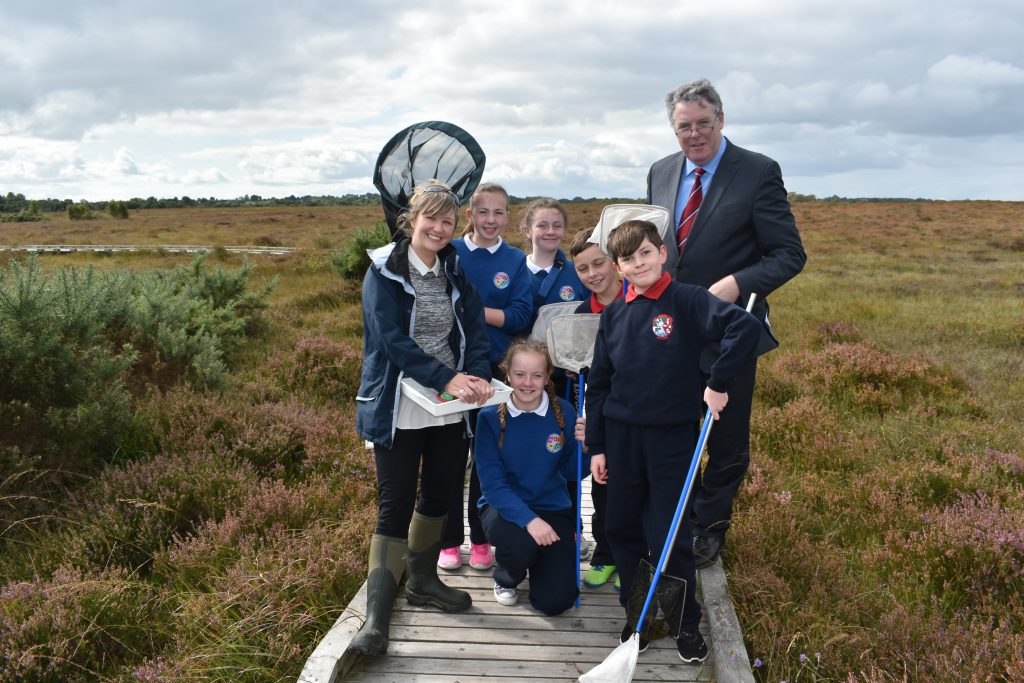
RTÉ’s news reporter and midlands editor Ciaran Mullooly reported on The Living Bog launch, bringing Clara Bog to hundreds of thousands of TV viewers and millions online. Local schoolchildren from Scoil Bhride and Scoil Phroinsias Naofa brought Ciaran on a tour of the bog with guides Rebecca Dobson of Clara Bog Visitor Centre and George Smith of The Living Bog.
The Living Bog team will be extending their community reach over the coming months, and will also be developing a schools programme with hundreds of schools. The project is also creating a history of midlands bogs and have urged locals in all 7 counties who have bog memories – be they of wildlife, work and tall tales – to contact them via email life@raisedbogs.ie or contact Ronan Casey at 076 1002627.
The launch and associated tour of Clara Bog were filmed by Irish national broadcaster RTÉ, and Midlands Editor and reporter Ciaran Mullooly created an impressive report which aired on the Irish national news at 6:01pm that day. It is also online HERE.
Well-known nature photographer Tina Claffey was among those at the launch and she was delighted to give the Minister the very first edition of her new bog photography book ‘Tapestry of Light’ to the Minister. The book has been part-supported by The Living Bog and the Department of Culture, Heritage and the Gaeltacht and is available nationwide in all good book stores and online HERE.
Below you will see a photo gallery from the launch.
You read about the launch on the Department website HERE
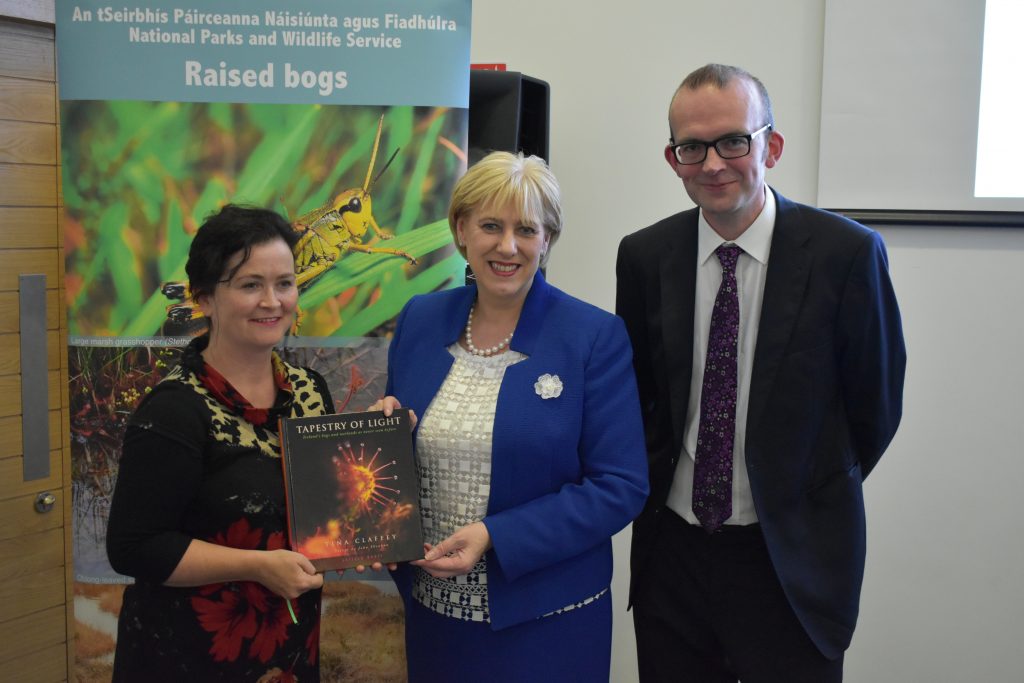
Birr nature photographer Tina Claffey presented the first copy of her new book ‘Tapestry of Light’, which was part-funded by ‘The Living Bog’ and the Department of Culture, Heritage and the Gaeltacht to Minister of Culture, Heritage and the Gaeltacht Heather Humphreys at the ‘Living Bog’ launch. She is pictured with Ronan Casey of ‘The Living Bog’.
Situated south of the historic Offaly town of Birr, Sharavogue Bog is one of Ireland’s best preserved raised bogs. Sharavogue Bog is also one of the few remaining raised bogs in Ireland situated on a floodplain. It has a well-developed dome of uncut peat which is long and relatively narrow. Restoration prospects here are very good.
Like our Westmeath project site Garriskill, it is bounded by a decommissioned public rail line on one side (the Birr-Roscrea line, see History section) and a river on the other – and it boasts a connection to no less a person than Saint Patrick! Turf cutting here never really reached the levels it did elsewhere in Offaly, though a large section to the north of the bog was extensively cut in the early 1900’s. But the main active raised body of the bog remains and its good condition is testament to two local men who worked together to save the bog from heavy machinery harvesting in the 1990’s. Drainage channels were dug across the bog sometime in the early 1990’s and only for the actions of Mr Liam Egan and Mr Patrick Headon, Sharavogue could have been lost forever.
The total site covers 223.43 ha and is situated between the River Little Brosna and an elevated ridge of Carboniferous limestone. It includes 137 ha of uncut raised bog and 86 ha of surrounding areas which include cutover bog, wet grassland, semi-natural woodland, and an area of wet lagg vegetation in the cutover along the eastern margin of the bog. The eastern edge is bounded by a disused railway embankment, which once linked Birr to Roscrea, and the western edge by the Little River Brosna.
Restoration works here were undertaken by contractors in 2021 with over 400 dams installed. These have helped re-wet the bog, increase the areas of Active Living Raised Bog, store carbon, clean water, increase biodiversity and generally make this impressive bog an even better place than it already was.
The bog is underlain by low permeability limestone and limestone till.
The site is a Special Area of Conservation (SAC) selected for the following habitats and/or species listed on Annex I / II of the E.U. Habitats Directive (* = priority; numbers in brackets are Natura 2000 codes):
[7110] Raised Bog (Active)*
[7120] Degraded Raised Bog
[7150] Rhynchosporion Vegetation
Active Raised Bog (ARB) comprises areas of high bog that are wet and actively peat-forming, where the percentage cover of bog mosses (Sphagnum spp.) is high, and where some or all of the following features occur: hummocks, pools, wet flats, Sphagnum lawns, flushes and soaks.
The LIFE team will publish its results in late 2021, but the most recent studies from 2011 and 2002 indicated that ARB cover on Sharavogue is high, over 25.8ha of the high bog area, mainly in the central and southern part of the dome. With restoration works to be carried out on site between 2017 – 2020 we aim to increase this to over 40h on the high bog. Prospects for restoration here are positive.
Degraded Raised Bog (DRB) corresponds to those areas of high bog where the hydrology has been adversely affected by peat-cutting, drainage and other land use activities, but which are capable of regeneration to ARB within 30 years.
The area of (DRB) on the High Bog was modelled as 29.5ha (by Fernandez et al. 2012), mainly on the southern dome but it lacks many extensive areas of quaking hummock/hollow/pools as a result of long-term drying out caused by peat cutting, burning and marginal and river drainage.
Many of the drains inserted on the high bog in the 90’s and on the south eastern area of the cutover were dammed in the late 1990s as part of an E.U. Cohesion project to restore peat forming conditions. That project was successful in halting and reversing, to some extent, the decline of ARB on the site.
The Living Bog built on this work, restoring and increasing the area of Active Raised Bog by almost twice its current amount. In time, our restoration work will lead to an even bigger increase…
